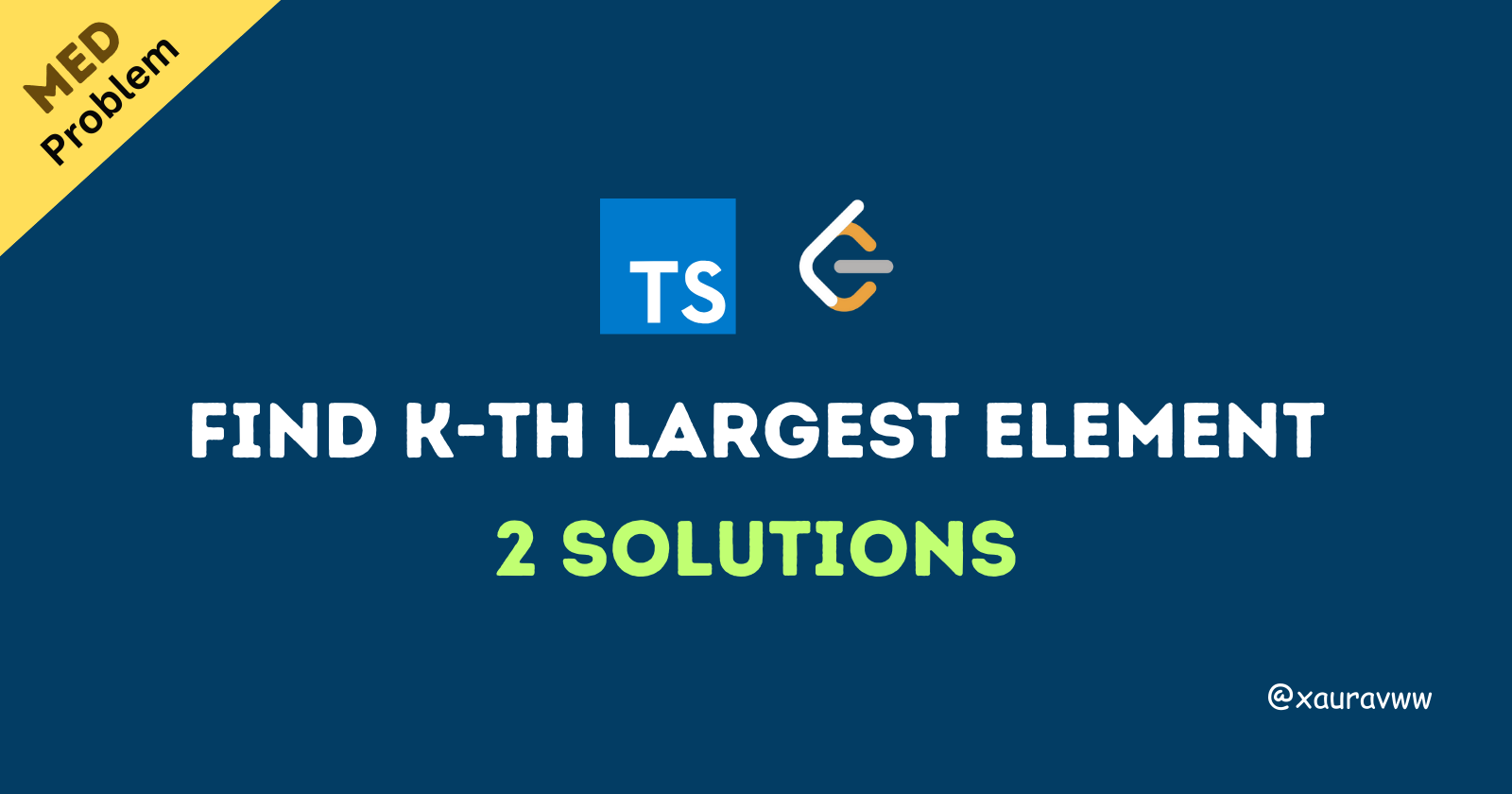Top Techniques to Identify the K-th Largest Element
 Saurav Maheshwari
Saurav Maheshwari
Given an integer array nums and an integer k, return the k-th largest element in the array.
Note that it is the k-th largest element in the sorted order, not the k-th distinct element.
Example 1:
Input: nums = [3,2,1,5,6,4], k = 2
Output: 5
Example 2:
Input: nums = [3,2,3,1,2,4,5,5,6], k = 4
Output: 4
Approach 1: Sorting
function findKthLargest(arr: number[], k: number): number {
// Sort numerically and then reverse
arr.sort((a, b) => a - b);
arr.reverse();
let i = 0;
let res = arr[0];
while (i !== k) {
if (arr[i] < res) {
res = arr[i];
}
i++;
}
return res;
}
How It Works
Sorting:
First, the array is sorted in ascending order.
Sorting rearranges all the elements so that the smallest numbers come first and the largest come last.
Reversing:
- After sorting, the array is reversed to make the largest elements come first.
Finding the k-th Largest:
- We then loop through the reversed array to find the k-th largest element. We keep track of the smallest value found during this iteration, which ends up being our desired k-th largest element.
Time Complexity
Sorting: O(n log n), where n is the number of elements in the array.
Overall Time Complexity: O(n log n) due to the sorting step being the most time-consuming.
Approach 2: Quickselect Algorithm
function findKthLargest(arr: number[], k: number): number {
let indexToFind = arr.length - k; //think it like array is sorted or we'll sort
//but choosing largest k-th element from the right side
//e.g. array of length 6 and k =2
//first largest => 6-1 = 5 i.e arr.length-1 as we are using 0-based indexing here
return quickSelect(arr, 0, arr.length - 1, indexToFind);
}
function quickSelect(nums: number[], left: number, right: number, indexToFind: number): number {
// base condition // when only 1 element left , return it
if (left === right) {
return nums[left];
}
let i = left - 1, j = right + 1;
//choose any method to randomize this pivot index
const pivot = nums[Math.floor((left + right) / 2)];
while (i < j) {
do { i++; } while (nums[i] < pivot);
do { j--; } while (nums[j] > pivot);
// Swap elements if pointers haven't crossed
if (i < j) {
[nums[i], nums[j]] = [nums[j], nums[i]];
}
}
if (j < k) {
//the indexToFind-th element is in the right partition
return quickSelect(nums, j + 1, right, indexToFind);
} else {
// Otherwise, the indexToFind-th element is in the left partition (or it's at `j`)
return quickSelect(nums, left, j, indexToFind);
}
}
How It Works
Pivot Selection:
- Choose a pivot (in this case, the middle element of the current subarray).
Partitioning:
- Reorder the array so that elements less than the pivot are on one side and elements greater are on the other.
Recursion:
Determine if the k-th largest element is in the left or right partition of the pivot.
Recursively apply the Quickselect algorithm to the appropriate partition.
Time Complexity
Average Case: O(n), where n is the number of elements. This is due to the partitioning step being linear on average.
Worst Case: O(n^2) in the worst-case scenario, typically when the pivot choices are poor.
Future Approach: Min-Heap
In a future update, I will discuss the min-heap approach, which provides another efficient way to find the k-th largest element by maintaining a heap of size k. This method can offer different performance characteristics and is particularly useful in scenarios where we need to handle large datasets efficiently.
Comment if I have committed any mistake. Let's connect on my socials. I am always open for new opportunities , if I am free :P
Subscribe to my newsletter
Read articles from Saurav Maheshwari directly inside your inbox. Subscribe to the newsletter, and don't miss out.
Written by
